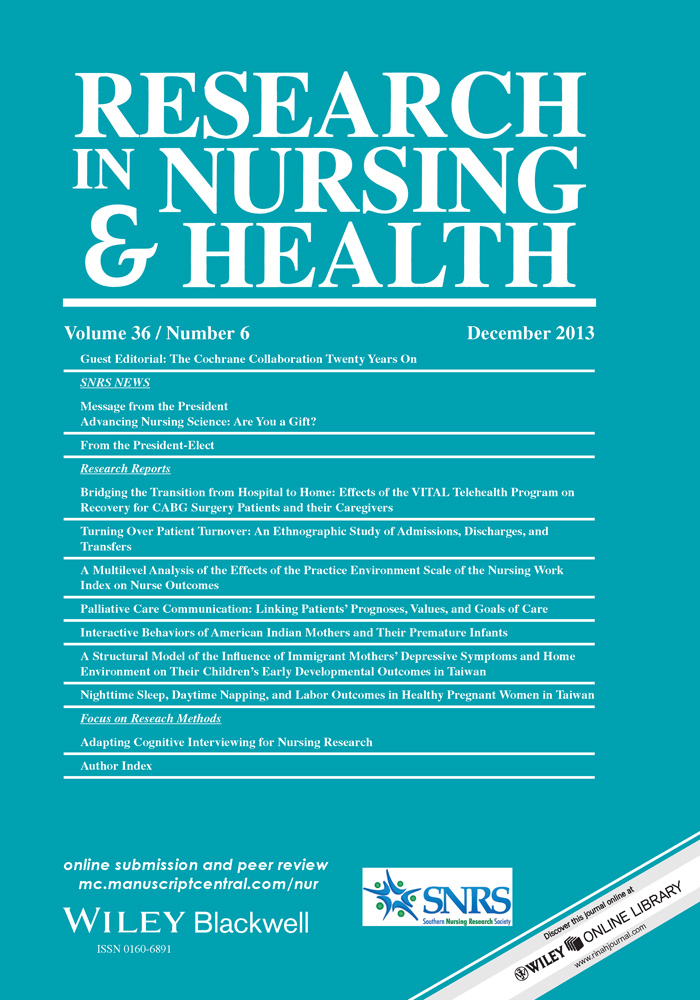Turning Over Patient Turnover: An Ethnographic Study of Admissions, Discharges, and Transfers
Abstract
The impact on nursing work of patient turnover (admissions, discharges, and transfers) became evident in an ethnographic study of turbulence. The patient turnover data were generated from extensive observations, 21 formal interviews, and a year of admission and discharge records on one medical and one surgical unit. Timing of turnover events on the two units differed, but on both units admissions typically interrupted workflow more than did discharges, clustered admissions were more disruptive than staggered admissions, and patient turnover during change of shift was more disruptive than during medication administration. Understanding the complexity of patient turnover will elucidate the work involved and improve the evidence base for nurse staffing, a key determinant of quality and safety of care. © 2013 Wiley Periodicals, Inc. Res Nurs Health 36: 554–556, 2013




